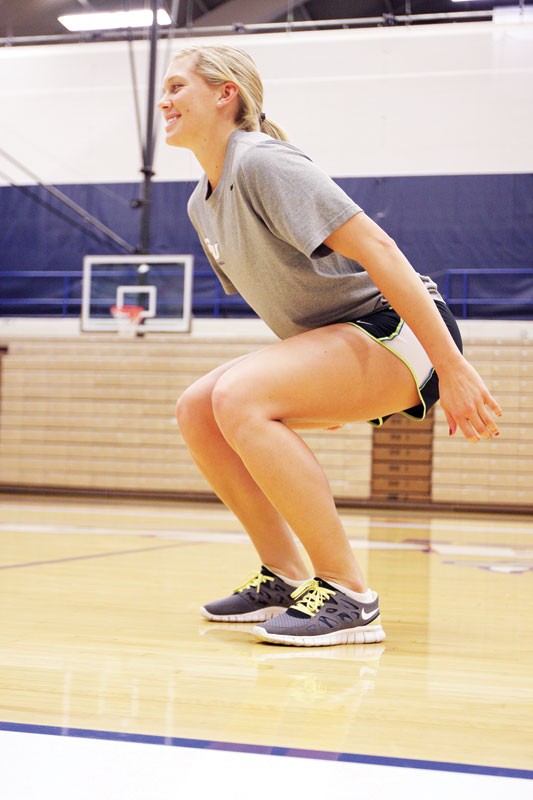Players on the Gonzaga women’s volleyball team can jump and reach their hands up to 10 feet or higher. Can you? If so, the season starts in August. If not, you better get training.
“The most important thing you can do to improve your vertical is to jump,” says Mike Nilson, a strength and conditioning coach for Gonzaga University and a former Gonzaga basketball player. And for the women’s volleyball team, the higher the jump, the greater the edge.
“Every inch you’re able to play over the net, I think it gives an advantage over the competition,” Nilson says.
As part of her training regimen, Denise Van De Mortel, a setter for the volleyball team, practices jumping exercises at almost every workout, although they vary throughout the season.
For Van De Mortel, jumping is a matter of training. But for those looking to build leg and core muscles and for a cardiovascular workout, Nilson recommends three different jumps that’ll get your heart pumping and your legs aching.
“These are three great core exercises to use as a foundation for your program,” Nilson says. But to do this effectively, Nilson adds, it’s best to switch up the types of jumps during your workout, and work up from doing one set a week to, once you get the form and fitness down, as many as three.
THE SQUAT JUMP
How to do it: Get into a squat, with your butt hanging above the ground and your knees bent at a 90-degree angle. Then propel yourself upward, straightening out your legs as you jump. Keep your arms up as you jump in the air, then try to land with your legs straight.
How hard is it? Easy, says Nilson. This should be one of the first exercises you do.
What it works: The gluteal muscles, which make up the buttocks, as well as the hamstrings, quadriceps and calf muscles. Nilson says the exercise will also work your shoulders, chest and arms.
What to watch out for: “Timing is crucial,” says Nilson. To get the right form for this exercise, you need to make sure you can propel yourself upwards from the squat to your maximum height. Pay particular attention to keeping your legs straight in the air.
THE TUCK JUMP
How to do it: Start in a half-squat, with your knees bent at a 45-degree angle and your butt out, but not hanging over the ground. Then explode upward, bringing your knees up to your body, so that you’re sort of in a ball while in mid-air. Then put your legs back under you as you land. You should land standing straight up.
How hard is it? Medium. Once you want something more challenging than the squat jump, try out the tuck jump.
What it works: This one takes a toll on the core, Nilson says, as well as the gluteals, the hamstrings and extensor muscles. Much of the stretch comes from the tuck at the start of the stretch, Nilson says. By tucking your muscles, the jumping motion works them as you fly up from the ground.
What to watch out for: “This one is all about how quickly you get off the ground,” Nilson says. “You want to spend the most amount of time in the air and the least amount on the ground.”
THE SCISSOR JUMP
How to do it: Get into a lunge, with one foot in front of you and one behind. You want your knees to be slightly bent. Then jump straight upwards and, while in mid-air, move your feet back and forth while keeping your legs straight. The idea is to get one kick in and land with your feet in the same position as when you started.
How hard is it? Hard. This one requires mastery of moving your legs while in mid-air, and landing smoothly.
What it works: While this works many of the same muscles in the legs and the core as the other exercises, the scissor jump is also useful for improving agility in the air, Nilson says, and getting athletes ready for the motion of moving legs back and forth during a match.
What to watch out for: Doing it too much. During the season, Nilson says, his athletes cut back on exercises like the scissor kick because they can end up tiring the players out.















